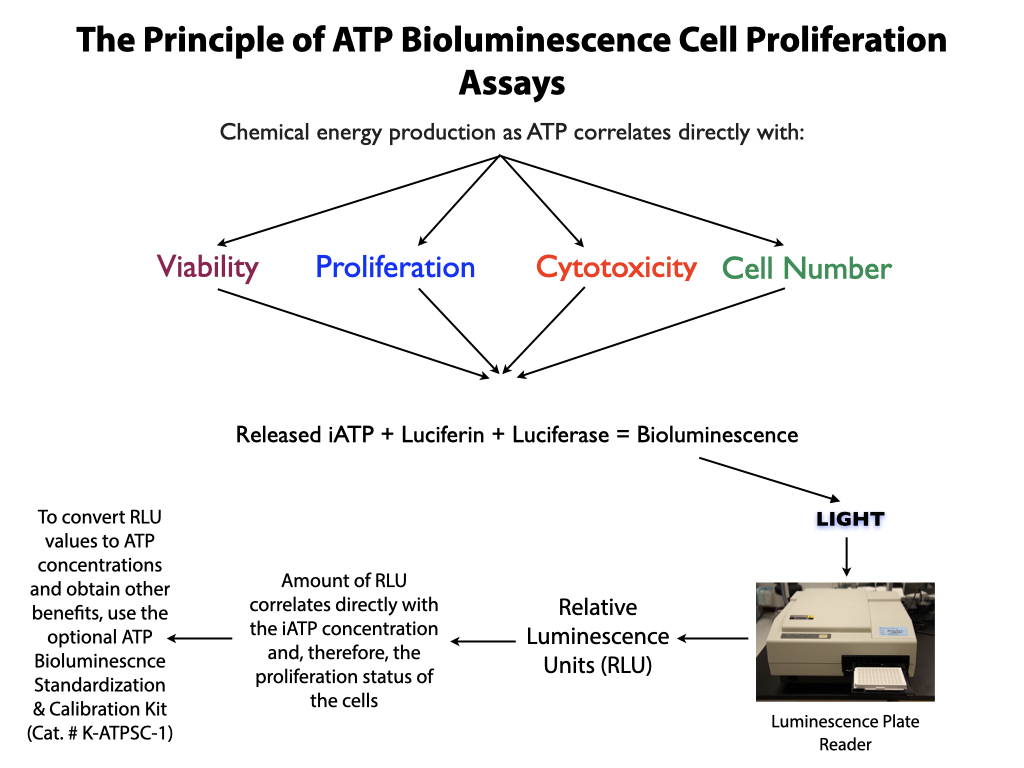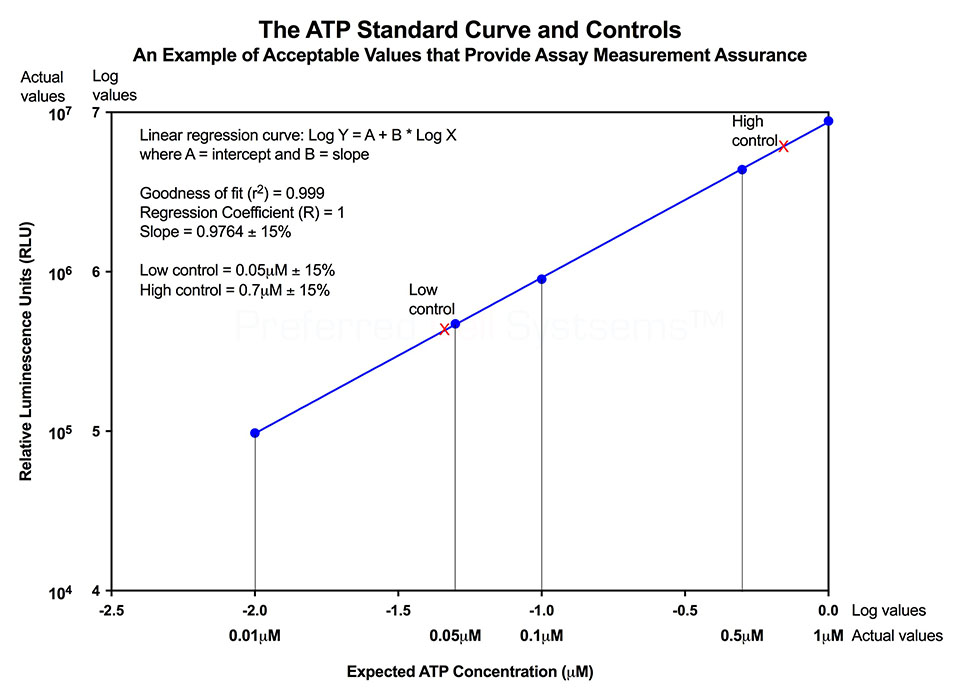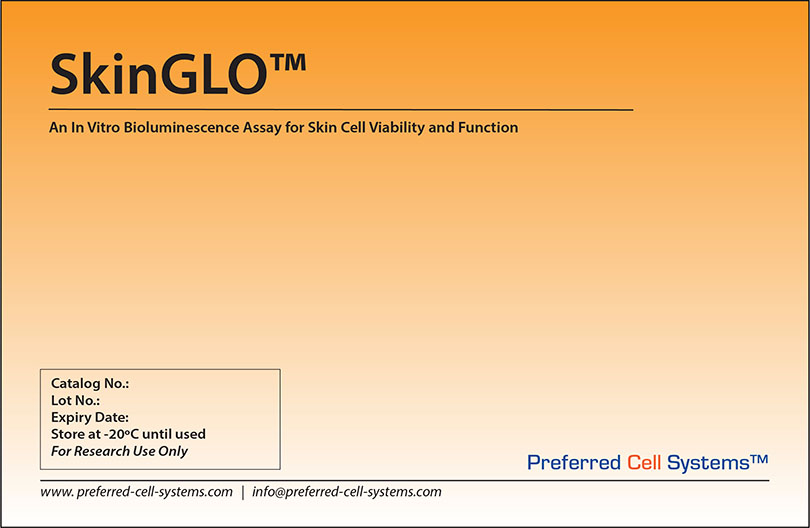SkinGlo™
An In Vitro Bioluminescence Assay for Skin Cell Viability and Function
Buy Add-On Standardization Assay Kit
| Description | Catalog Number | Quantity |
|---|---|---|
| An Add-On Kit for Any Bioluminescence "GLO" Assay | K-ATPSC-1 | 1 Kit |
SkinGlo™
The Easy and Rapid In Vitro Research Bioluminescence Assay for Skin Cells
| Cell Population | Species | Medium Formulation | Catalog Number | Quantity |
|---|---|---|---|---|
| Skin cells (adherent) | Any | User defined | KDG-A-1 | 1 Kit |
| Skin cells (non-adherent) | Any | User defined | KDG-NA-1 | 1 Kit |
Uses of SkinGlo™
- Study epidermal stem cell function, self-renewal and proliferation.
- Factors affecting wound healing.
- Determine the metabolic viability of different cell types derived from skin tissue.
- The role of adhesion factors.
- Study the effect of agents on skin function in different cell types.
- Study the effect of nanoparticles on skin cell types.
- Study diseases of the skin.
- The most sensitive and accurate assay readout available incorporating proven ATP bioluminescence technology.
- Optional assay standardization using the ATP Bioluminescence Standardization & Calibration Kit (K-ATPSC-1).
- Measurement assurance parameters ensure the assay is working correctly.
- Validated according to FDA bioanalytical method validation guidelines.
- Fast, reliable and reproducible readout with result in 15 minutes for a 96-well plate
- High throughput capability.
- Reliably compare results over time.
- Multiplexing capability allowing the assay to be combined with other endpoints from the same sample.

Performing the ATP standard curve and controls is highly recommended, since it allows conversion of non-standardized RLU values into standardized ATP concentrations. The controls are used to calibrate the luminescence plate reader and the ATP standard is used to standardize the assay. The values obtained from the standard curve and controls (see diagram below) are then compared to the measurement assurance parameters that are provided in the instruction manual. If the values obtained are within the ranges provided by the measurement assurance parameters, you, the user, have successfully performed the proficiency testing to ensure that you have not only performed the assay correctly, but that the results you obtain can be trusted.
No additional proficiency testing is required if the calibration and standardization procedure is performed. The values you obtain from each calibration and standardization can be logged and used for certification that the assay has been performed correctly and that the results are trustworthy.

Species and Cell Sources
No additional proficiency testing is required if the calibration and standardization procedure is performed. The values you obtain from each calibration and standardization can be logged and used for certification that the assay has been performed correctly and that the results are trustworthy.

SkinGlo™ can be used for primary skin cells as well as skin cell lines from multiple species.
For Research Use Only. Not for clinical diagnostic use.
Luminescence or multimode plate reader with "glow" luminescence measuring capability.
- ATP Enumeration Reagent.
- Sterile, white, 96-well plates for skin cell culture. Choice of adherent or non-adherent plates.
- Sterile, adhesive foil covers to maintain sterility of unused wells.
PLEASE NOTE. The investigator has the flexibility to culture skin cells using their own growth medium.
Please visit the Instructional Videos page
Download the SkinGlo™ Technical Manual
Download the ATP Bioluminescence Standardization & Calibration Kit Manual
Download Certificate of Analysis (CoAs) for ATP Enumeration Reagent (ATP-ER)
Download Certificate of Analysis for ATP Stanadrds
Download Certificate of Analysis for ATP Controls
Download Certificate of Analysis of ATP Reconstitution Reagent
Download Certificate of Analysis for Sterile 96-Well Plates
Download Certificate of Analysis for Non-Sterile, 96-Well Plates
Download Certificate of Analysis for Sealing Films
Download Certificate of Analysis for IMDM
Download the SkinGlo™ Technical Manual
Download the ATP Bioluminescence Standardization & Calibration Kit Manual
Download Certificate of Analysis (CoAs) for ATP Enumeration Reagent (ATP-ER)
Download Certificate of Analysis for ATP Stanadrds
Download Certificate of Analysis for ATP Controls
Download Certificate of Analysis of ATP Reconstitution Reagent
Download Certificate of Analysis for Sterile 96-Well Plates
Download Certificate of Analysis for Non-Sterile, 96-Well Plates
Download Certificate of Analysis for Sealing Films
Download Certificate of Analysis for IMDM
